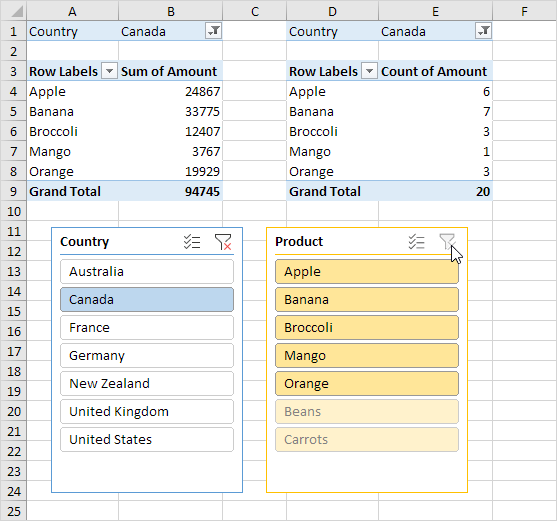- Data Slicers Excel
- 4 Level Data Slicer Manual
- 4 Level Data Slicer As Seen On Tv
- 4 Level Data Slicer Attachment
- 4 Level Data Slicer Tool
 Home < Documentation < 4.8 < Modules < Data
Home < Documentation < 4.8 < Modules < DataFor the latest Slicer documentation, visit the 4.10 page. |

=SlicerSelections(SlicerName).where SlicerName can be found by simply right-clicking on a slicer, select Slicer Settings and in the pop-up windows it will say: 'Name to use in formulas: SlicerName'. In my case SlicerName was SlicerAcct. This function will created a space-delimited list of selected values in the referenced slicer. The Data Slicer provides an interface which allows users to get subsections of either VCF or BAM files based on genomic coordinates.In the Ensembl GRCh37 browser, you can access the Data Slicer from the tools link in the menu bar at the top of every page.

Slicer 4.10.2 released. 3D Slicer is an open source software platform for medical image informatics, image processing, and three-dimensional visualization. Built over two decades through support from the National Institutes of Health and a worldwide developer community, Slicer brings free, powerful cross-platform processing tools to physicians.
| ||||||
|
This module lists the objects of the current scene and permits general operations (such as search, rename, delete, move) on the MRML tree.
The Data module acts as a central creates an identity linear transform node and applies it on the selected node. 'Edit properties' opens the module of the node (e.g. 'Volumes' for volume nodes, 'Models' for model nodes, etc.). 'Rename' opens a dialog to rename the node. 'Delete' removes the node from the scene. Internal drag-and-drops are supported in the view, while moving a node position within the same parent has no effect, changing the parent of a node has a different meaning depending on the current scene model.
- All nodes
- Unstructured view of all nodes in the scene. Supports Edit properties, Rename, Delete

Data Slicers Excel
- Common
- Filter: Hide all the nodes not matching the typed string. This can be useful to quickly search for a specific node. Please note that the search is case sensitive
- MRML node information: Attribute list of the currently selected node. Attributes can be edited (double click in the 'Attribute value' cell), added (with the 'Add' button) or removed (with the 'Remove' button).
- Create new Subject from scratch
- Right-click on the empty area and select 'Create new subject'
- Create new folder
- Right-click on an existing item or the empty area and select 'Create new folder'. Folder type hierarchy item can be converted to Subject or Study using the context menu
- Rename item
- Right-click on the node and select 'Rename', or double-click the name of a node

- Apply transform on node or branch
- Double-click the cell of the node or branch to transform in the transform column (same icon as Transforms module), then set the desired transform. If the column is not visible, check the 'Transforms' checkbox under the tree. An example can be seen in the top screenshot at Patient 2
4 Level Data Slicer Manual
N/A
4 Level Data Slicer As Seen On Tv
- Additional information on Subject hierarchy labs page
- Manual editing of segmentations can be done in the Segment Editor module
4 Level Data Slicer Attachment
- Code snippets accessing and manipulating subject hierarchy items can be found in the script repository
- Implementing new plugins: Plugins are the real power of subject hierarchy, as they provide support for data node types, and add functionality to the context menu items.
To create a C++ plugin, implement a child class of qSlicerSubjectHierarchyAbstractPlugin, for Python plugin see below. Many examples can be found in Slicer core and in the SlicerRT extension, look for folders named SubjectHierarchyPlugins.- Writing plugins in Python:
- Child class of AbstractScriptedSubjectHierarchyPlugin which is a Python adaptor of the C++ qSlicerSubjectHierarchyScriptedPlugin class
- Example: Annotations role plugin, function plugin
- Role plugins: add support for new data node types
- Defines: ownership, icon, tooltip, edit properties, help text (in the yellow question mark popup), visibility icon, set/get display visibility, displayed node name (if different than name of the node object)
- Existing plugins in Slicer core: Markups, Models, SceneViews, Charts, Folder, Tables, Transforms, LabelMaps, Volumes
- Function plugins: add feature in right-click context menu for certain types of nodes
- Defines: list of contect menu actions for nodes and the scene, types of nodes for which the action shows up, functions handling the defined action
- Existing plugins in Slicer core: CloneNode, ParseLocalData, Register, Segment, DICOM, Volumes, Markups, Models, Annotations, Segmentations, Segments, etc.
- Writing plugins in Python: